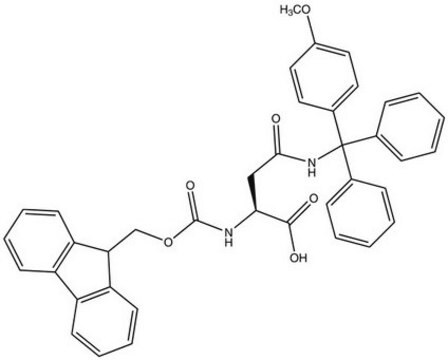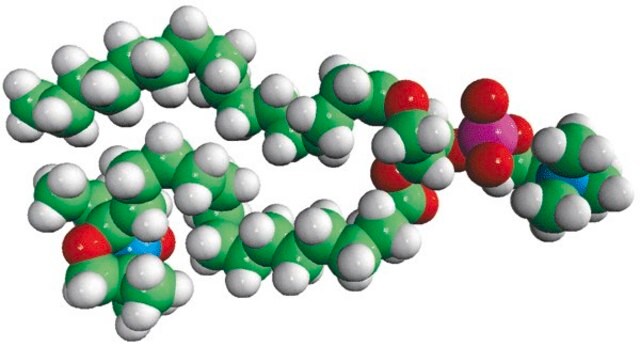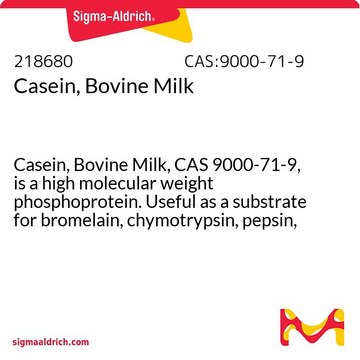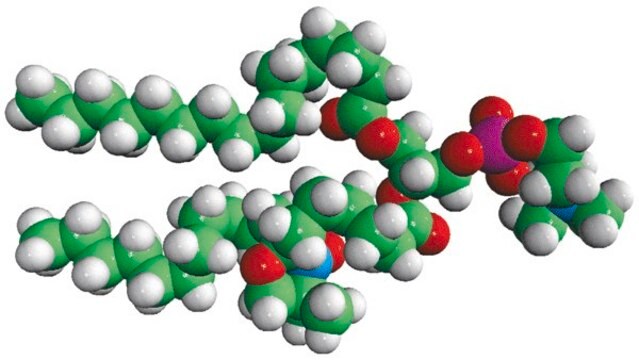810600P
Avanti
16:0-12 Doxyl PC
Avanti Research™ - A Croda Brand 810600P, powder
Sinónimos:
1-palmitoyl-2-stearoyl-(12-doxyl)-sn-glycero-3-phosphocholine
About This Item
Productos recomendados
Ensayo
>99% (TLC)
Formulario
powder
envase
pkg of 1 × 1 mg (810600P-1mg)
fabricante / nombre comercial
Avanti Research™ - A Croda Brand 810600P
tipo de lípido
ESR probes
phospholipids
Condiciones de envío
dry ice
temp. de almacenamiento
−20°C
Descripción general
Aplicación
- as a lipophilic collisional quencher to prepare liposomes used in lipophilic quenching experiments
- to prepare liposomes used in nitroxide quenching experiments to examine the location of each NBD (7-nitrobenz-2-oxa-1,3-diazole) probe in mutants
- as a component in POPC or 1:1 1-palmitoyl-2-oleoyl-sn-glycero-3-phosphocholine (POPC)/1-palmitoyl-2-oleoyl-sn-glycero-3-phospho-rac-1-glycerol (POPG) mixtures to prepare unlabelled large unilamellar liposomes
Acciones bioquímicas o fisiológicas
Envase
Nota de preparación
Información legal
también adquirido normalmente con este producto
Código de clase de almacenamiento
11 - Combustible Solids
Elija entre una de las versiones más recientes:
Certificados de análisis (COA)
It looks like we've run into a problem, but you can still download Certificates of Analysis from our Documentos section.
Si necesita más asistencia, póngase en contacto con Atención al cliente
¿Ya tiene este producto?
Encuentre la documentación para los productos que ha comprado recientemente en la Biblioteca de documentos.
Nuestro equipo de científicos tiene experiencia en todas las áreas de investigación: Ciencias de la vida, Ciencia de los materiales, Síntesis química, Cromatografía, Analítica y muchas otras.
Póngase en contacto con el Servicio técnico








